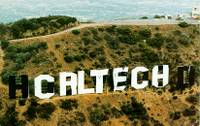Dihydrogen Monoxide
Sounds deadly right?
"Dihydrogen Monoxide (DHMO) is a colorless and odorless chemical compound, also referred to by some as Dihydrogen Oxide, Hydrogen Hydroxide, Hydronium Hydroxide, or simply Hydric acid. Its basis is the unstable radical Hydroxide, the components of which are found in a number of caustic, explosive and poisonous compounds such as Sulfuric Acid, Nitroglycerine and Ethyl Alcohol."There's more:
"You should be concerned about DHMO! Although the U.S. Government and the Centers for Disease Control (CDC) do not classify Dihydrogen Monoxide as a toxic or carcinogenic substance (as it does with better known chemicals such as hydrochloric acid and saccharine), DHMO is a constituent of many known toxic substances, diseases and disease-causing agents, environmental hazards and can even be lethal to humans in quantities as small as a thimbleful."For those of you who DON'T get the joke, we're talking about water. H2O (get it now?), that amazingly simple liquid that we all need to drink in order to be healthy. We are ~70% water. That's a fact. But a new study suggests that we should beware the consumption of this dangerous compound! This research suggests that simply drinking water could lead to heart attack or stroke.
Hyponatremia is not a new condition. Doctors have known about it for years. If you drink too much water while you exercise, you can flush all of the electrolytes out of your system. I had a friend who collapsed from doing this in high school. But it took 6 weeks of drinking nothing but water and eating nothing but plain pasta and grilled chicken before running 40 laps in 85 deg. F weather (Fresno in May) on the day he collapsed.
The way it's described, though, is enough to make you afraid to drink. "Drink Water, But not Too Much", advises the Chicago Sun-Times. "Drinking Water Dangerous for Runners" says the Phillippines Daily Enquirer.
Researchers even found that halving the number of water stops along the route of the Boston Marathon decreased the number of runners seeking treatment for hyponatremia at the end of the race. My question about this is that presumably these people have been training for weeks, and drinking water during their training, so why halve the water stations (an EXTREMELY unpopular move in the runners opinion) instead of looking at how the long term consumption of large quantities of water during exercise affect salt levels? It stands to reason that these folks have been depleting their salt levels over a LONG period of time.
There are simple steps any person can take to avoid hyponatremia, such as consuming salty snacks (like pretzels, or a small serving of peanut butter) before and after hard workouts, or even switching out the water they would normally drink for a bottle of any commercial sports drink or fruit juice once in a while. Gatorade is literally flavored sweat.
So don't give me that line that water is bad for you. It needs to be consumed, but sensibly. There's no reason that your standard 8 glasses of water a day should drive ANYONE into hyponatremia, unless they don't eat. The benefits of proper hydration range from younger-looking skin to better sleep to improved weight loss, and the extra calories we get from juice and sports drinks make water a better choice.
File this one under media scare tactics, folks.


















4 Comments:
Very cute babe. I didn't think that there was too much you could do at work today...
--Darling Husband
Who are you really? and why aren't you working? ;)
Ah, an oldie but goodie.
Last year, the city of Aliso Viejo, CA very nearly banned Styrofoam cups on the grounds that their production process involves the use of dihydrogen monoxide.
Post a Comment
<< Home